Archives
- 2018-07
- 2018-10
- 2018-11
- 2019-04
- 2019-05
- 2019-06
- 2019-07
- 2019-08
- 2019-09
- 2019-10
- 2019-11
- 2019-12
- 2020-01
- 2020-02
- 2020-03
- 2020-04
- 2020-05
- 2020-06
- 2020-07
- 2020-08
- 2020-09
- 2020-10
- 2020-11
- 2020-12
- 2021-01
- 2021-02
- 2021-03
- 2021-04
- 2021-05
- 2021-06
- 2021-07
- 2021-08
- 2021-09
- 2021-10
- 2021-11
- 2021-12
- 2022-01
- 2022-02
- 2022-03
- 2022-04
- 2022-05
- 2022-06
- 2022-07
- 2022-08
- 2022-09
- 2022-10
- 2022-11
- 2022-12
- 2023-01
- 2023-02
- 2023-03
- 2023-04
- 2023-05
- 2023-06
- 2023-08
- 2023-09
- 2023-10
- 2023-11
- 2023-12
- 2024-01
- 2024-02
- 2024-03
- 2024-04
- 2024-05
- 2024-06
- 2024-07
- 2024-08
- 2024-09
- 2024-10
- 2024-11
- 2024-12
- 2025-01
- 2025-02
- 2025-03
-
br FXR expression in normal intestine and cancer Of note
2022-07-19
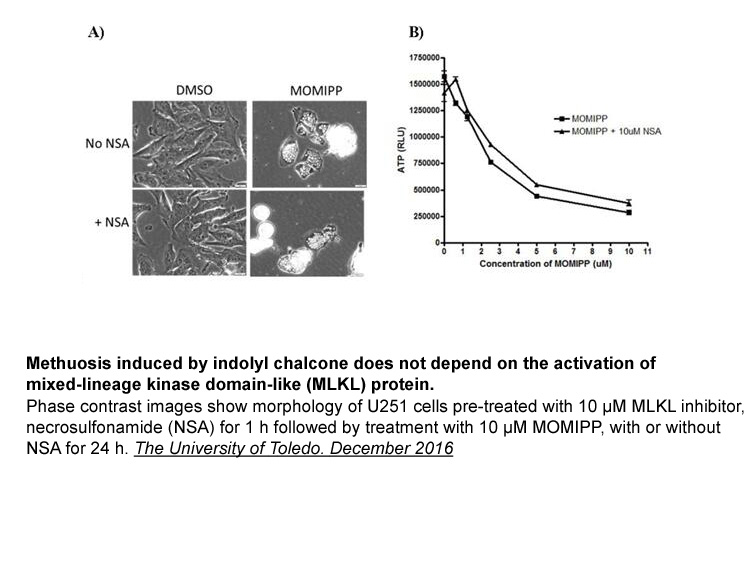
FXR CGP41251 in normal intestine and cancer Of note, there are several question marks about FXR post-translational modifications (such as acetylation or SUMOylation) and their involvement in the pathogenesis of metabolic and inflammatory disease (Balasubramaniyan et al., 2013, Kemper et al., 200
-
br Medium to long chain fatty
2022-07-19
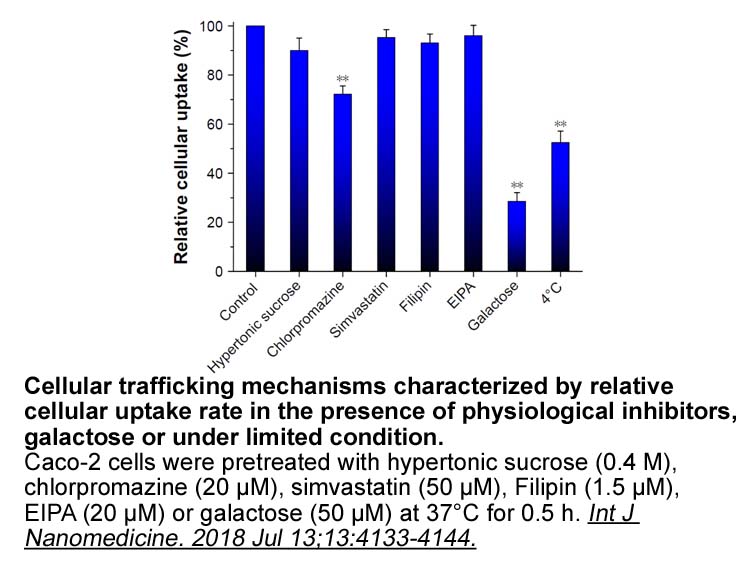
Medium- to long-chain fatty acids Medium- to long-chain fatty acids impart a wide range of physiological effects. Medium-chain and long-chain fatty acids have 6–12 carbons and >12 carbons, respectively. As the energy source, these fatty acids are supplied primarily by food intake, biosynthesis, a
-
In the light of the above mentioned considerations it
2022-07-19
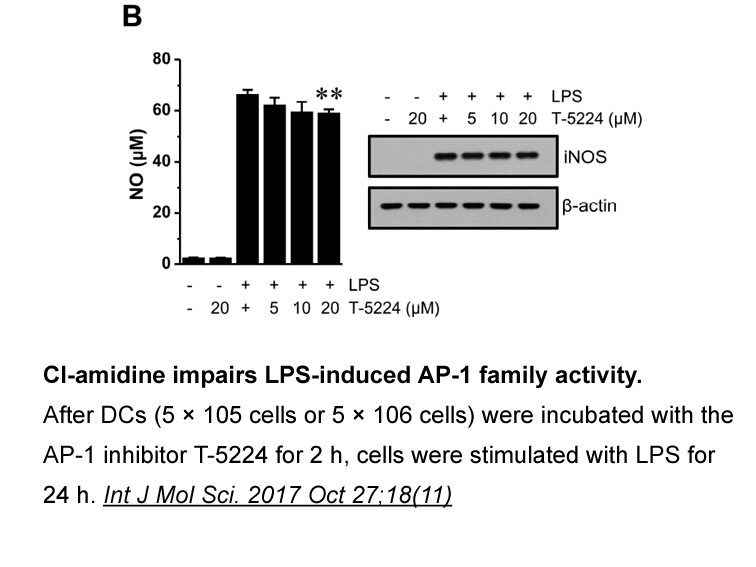
In the light of the above-mentioned considerations, it is interesting to note that the FPR-related research with regards to bias agonism did not prosper during considerably during the last decade (possible exceptions are [[8], [9], [10], [11]]. However, with new insights in receptor chemistry and fu
-
br Introduction Fructose bisphosphatase FBPase EC catalyses
2022-07-18
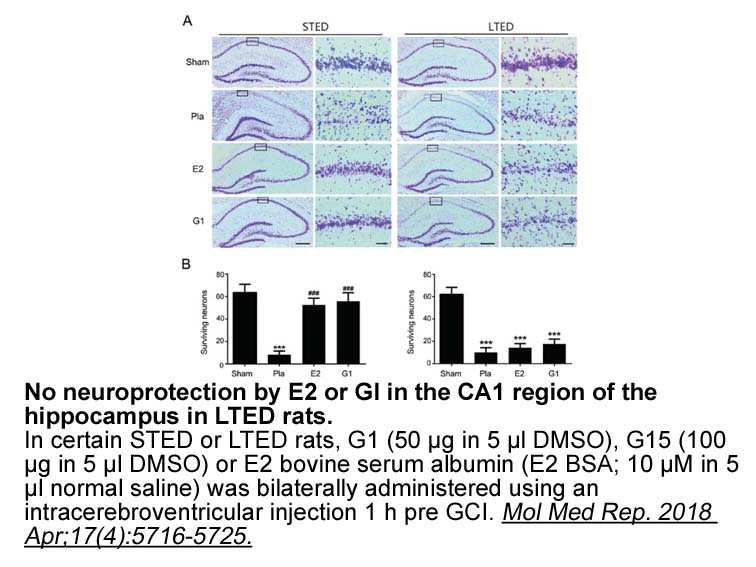
Introduction Fructose 1,6-bisphosphatase (FBPase; EC 3.1.3.11) catalyses the irreversible reaction of hydrolysis of fructose 1,6-bisphosphate to fructose 6-phosphate and inorganic phosphate [1]. Genetic and kinetic studies so far have demonstrated that at least two distinct isoenzymes of FBPase e
-
Sumoylation is involved in regulating protein
2022-07-18
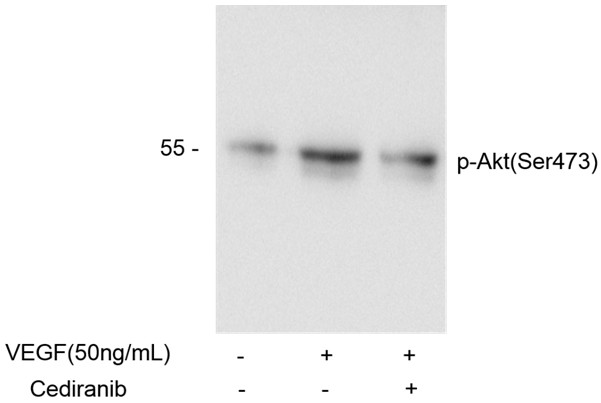
Sumoylation is involved in regulating protein-protein interactions, subcellular protein localization, protein stability, and transcriptional factor activity (reviewed in [29]). The small ubiquitin-like modifier (SUMO) protein is covalently attached to a lysine residue in a Ψ-K-X-D/E consensus sequen
-
br Hydroxyfarnesyl diphosphate was synthesised in three step
2022-07-18
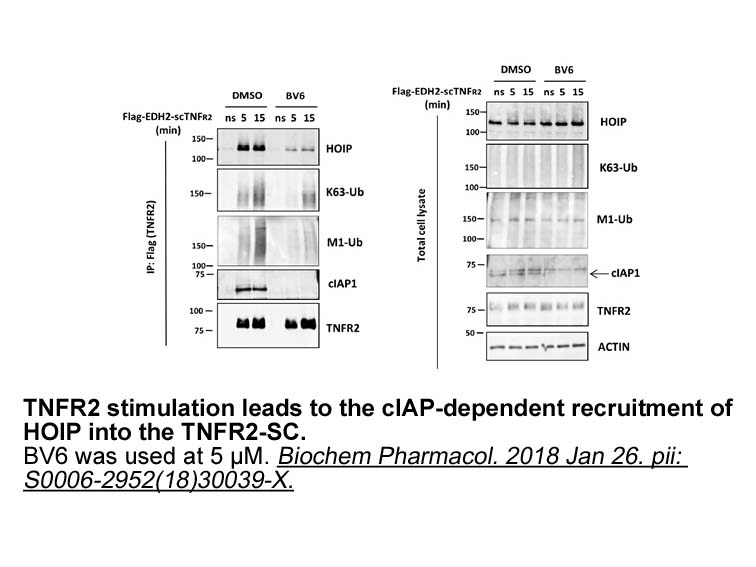
12-Hydroxyfarnesyl diphosphate (6) was synthesised in three steps starting from commercially available (E,E)-farnesol (10) (Scheme 5). Chlorination of 10 gave farnesyl chloride (11) in a quantitative yield, which was carried forward without purification. The following step was a selenium dioxide-c
-
Chicoric acid CA is a di acylated hydroxycinnamoyl tartaric
2022-07-18

Chicoric 900 80 (CA) is a di-acylated hydroxycinnamoyl tartaric acid ester [12] found in a variety of plant species, especially within the Astereceae family [13]. Of interest for this study, Sonchus oleraceus and Bidens pilosa plants, from Astereceae family, were used. Both S. oleraceus and B. pilos
-
The comparatively low number of H R agonists
2022-07-18

The comparatively low number of H1R agonists is contrasted by the high number of diverse H1R antagonists. Based on pharmacological classification, they are grouped into different generations by considering their target as well as side effects profile. The first generation “antihistamines” consist of
-
Histamine H and H receptor expression is altered in the
2022-07-18
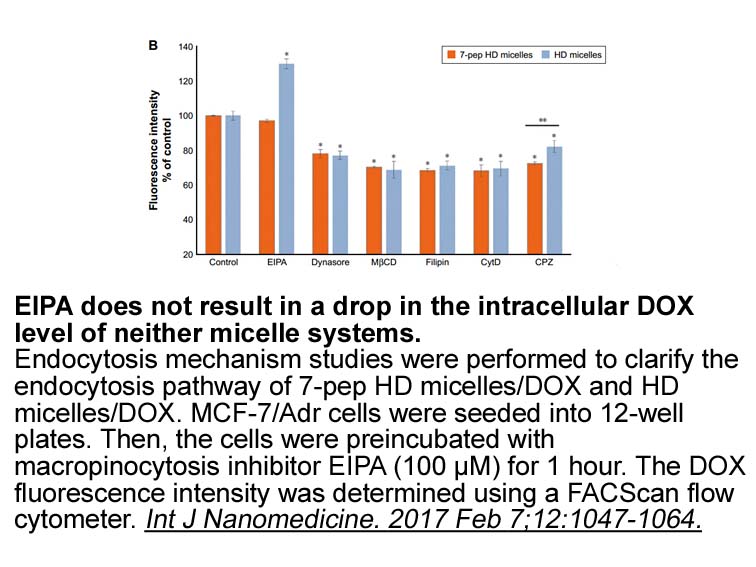
Histamine H2 and H3 receptor expression is altered in the Eribulin of Hdc mice (Chepkova et al, 2012, Fitzsimons and et al, 2001). Because these mice lack HA, expression of HA receptors might be thought to be irrelevant. This is not the case in Hdc heterozygotes, however, or in patients with a hete
-
The presence of the H receptor
2022-07-18
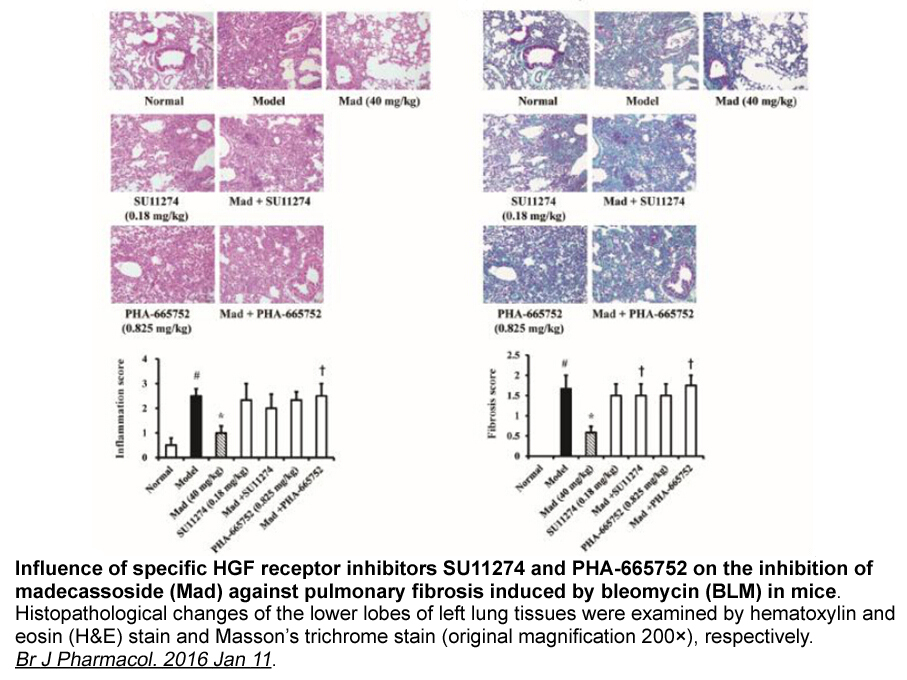
The presence of the H3 receptor in humans was confirmed approximately 25 years ago, and the receptor was successfully cloned in 1999 (Thurmond, 2010). The H3 receptor is unique, as it controls feedback of histamine release, particularly in the central nervous system, where it modulates neurotransmit
-
The CRY protein contains a conserved photolyase homology
2022-07-18
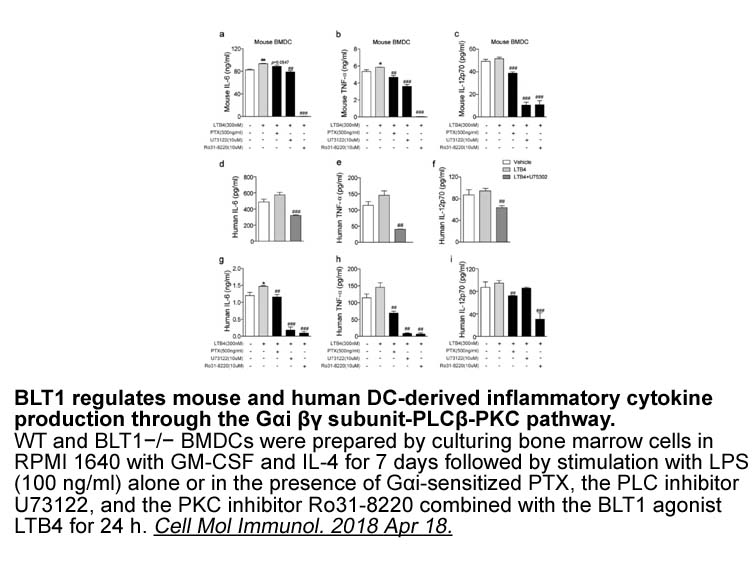
The CRY1 protein contains a conserved photolyase homology region crucially involved in repression of CLOCK/BMAL1; a C-terminal helix also known as the predicted coiled coil (CC), which interacts with PER2 and FBXL3 in a mutually exclusive manner; and a C-terminal extension also referred to as the “t
-
br Acknowledgments This research was funded by generous gran
2022-07-18
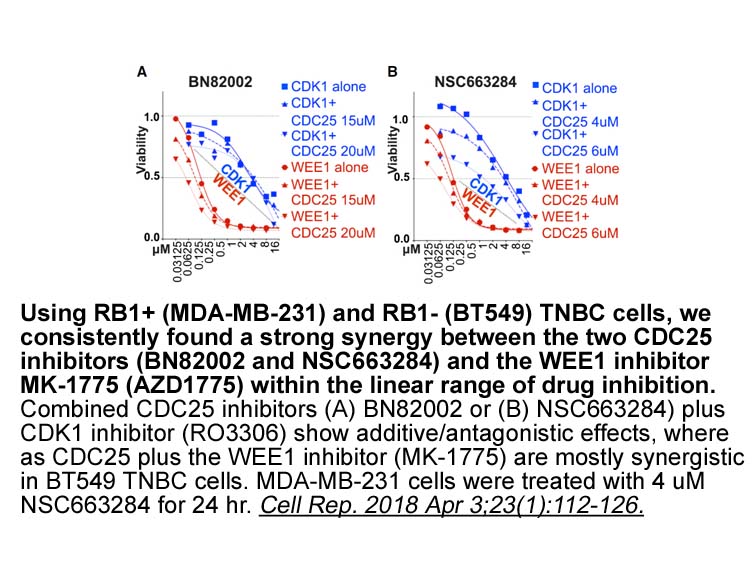
Acknowledgments This research was funded by generous grants from the Singapore National Medical Research Council (NMRC CBRG grant NMRC/CBRG12Nov114 (BD)). WJC is supported by NMRC Clinician Scientist Investigator award and partly supported by a Singapore Cancer Syndicate Grant, the National Resea
-
CH 223191 Recently anti tumor or antiviral
2022-07-18
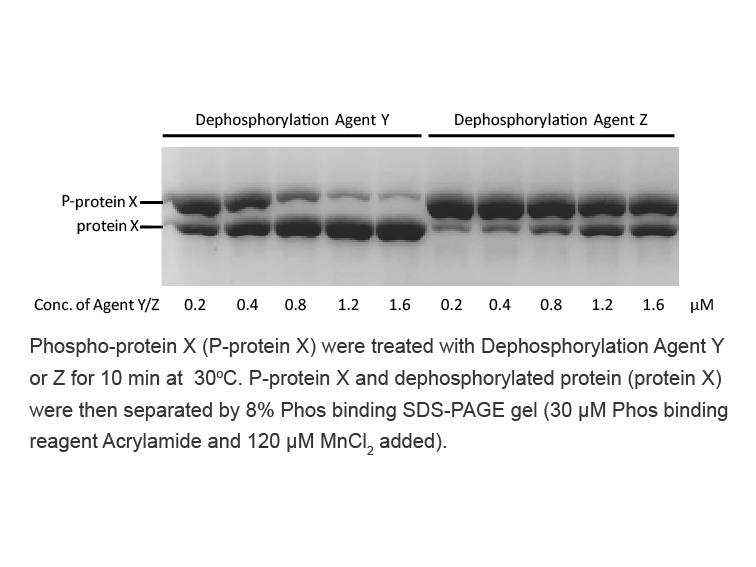
Recently, anti-tumor or antiviral strategies using RNAi for both gene silencing and innate-receptor activation were designed; one mechanism of these strategies is activating the intracellular retinoic acid–inducible gene I protein (RIG-I). 5′-Triphosphate RNA (3p-small interfering RNA [siRNA]) is th
-
Following our initial observation of an
2022-07-18
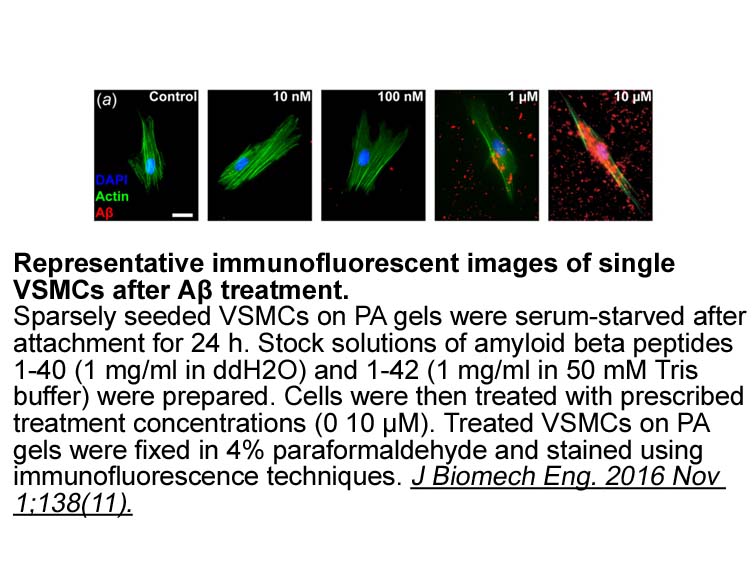
Following our initial observation of an unexpected increase in the maximal rates of cGMP formation by NO-stimulated sGC in the presence of cytosolic PCA preparations [15], we attempted to purify, identify and characterize the responsible protein(s). The purification protocol described in the present
-
An interesting question is why RhoF has such the slow
2022-07-18
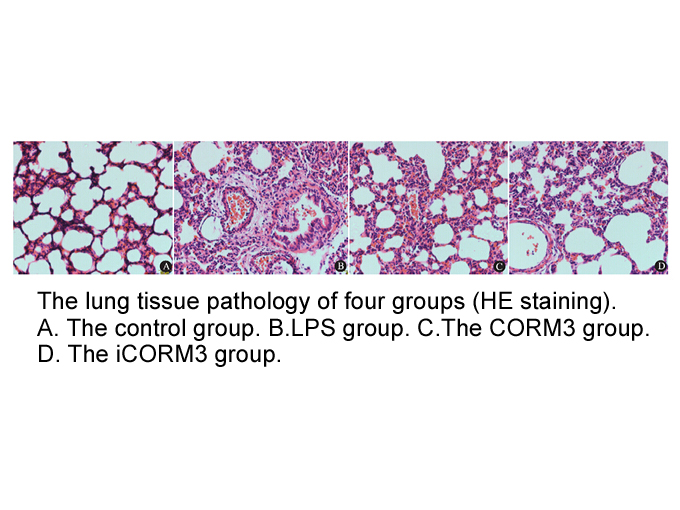
An interesting question is why RhoF has such the slow rate of GDP dissociation. The amino CBR-5884 mutations in a presumable GDP-binding site of RhoF had only moderate effects on the GDP dissociation (Fig. 3C), which suggests a mechanism involving the global amino acid sequence of RhoF, rather than
15877 records 381/1059 page Previous Next First page 上5页 381382383384385 下5页 Last page